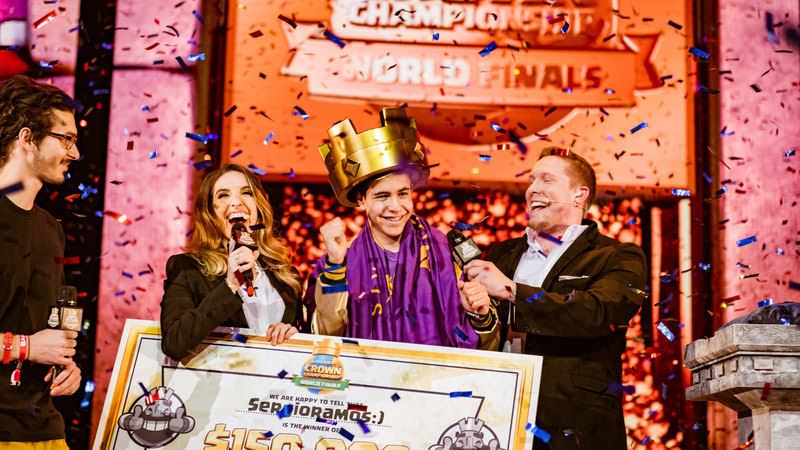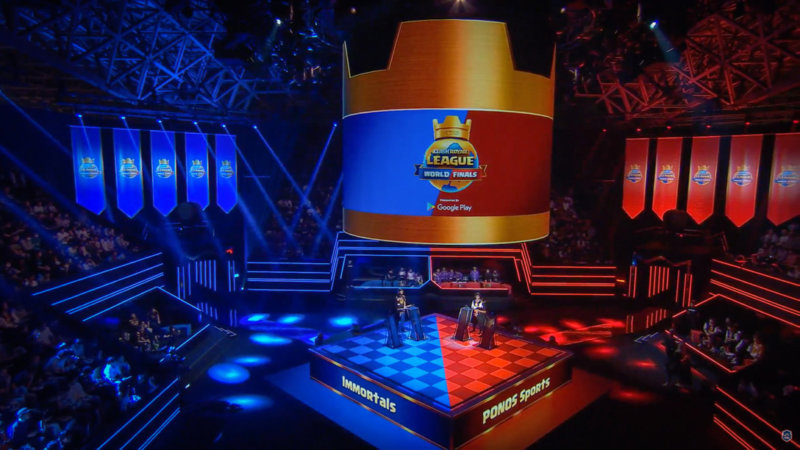When we talk about mobile games, one developer comes to mind – Supercell. The Finnish company is behind some of the most loved and played video games like Clash of Clans and Clash Royale.
Clash Royale was released back in 2016. Even six years later, the game continues to be a regular feature on the top charts for the Google Play Store and Apple App Store. Supercell has managed to keep the game alive through regular updates and engaging content being constantly added to the game.
The official Twitter account wished fans a new year with the highlights of the year – and also listed out the statistics for the year.

Nearly 34 billion Clash Royale battles were played in 2022
- The total battles which were played throughout the 365 days of the last year stand at 33.9 billion which comes out to an average of about 92 million per day.
- Throughout these battles, 11.7 billion cards were upgraded while 23.5 billion chests were opened. Players earned a combined total of 58.9 trillion gold throughout the year.
- The log was the most used card followed by Valkyrie and the Skeleton Army. The Chicken, on the other hand, was the most used emote.
These numbers aren’t very surprising to see considering the game has more than 100 million downloads across Android and iOS. It likely has over a million daily active users as well.
Besides this, Clash Royale is a highly-competitive game which keeps fans hooked to it. The easy-to-view top screen also makes it a great spectator sport. While the game had all the elements to be a successful esport title, it has failed to become one yet. Esports.net takes a look at why this is the case.
The once perfect launch for Clash Royale esports
Mobile esports back in 2016 was a hopeful concept. As mobile games got more popular and competitive, the scope for an esports scene also grew.
Clash Royale, however, stood out from other competitive games like Vainglory at the time. Other mobile games were criticized for being a toned-down copy of traditional gaming genres. Supercell, on the other hand, managed to create an independent genre for the game. It mixed the fast-paced action of a MOBA with the competitiveness of a card game like Hearthstone.
As the game managed to overcome these shortcomings, there was a lot of hope for the growth of mobile esports alongside Clash Royale. Initially, this is exactly what happened. The first tournament happened at the Esports World Convention in early 2017. The convention provided the perfect launch for Clash Royale esports – and it was really successful as well. It achieved a peak viewership of more than 80,000, per Esports Charts.
Supercell kept the initial spark alive with regular community tournaments and concluded the year with a bang at the Crown Championship World Finals 2017. This tournament achieved a record-breaking 236,000 peak viewership – indicating the growth of Clash Royale esports in just a year.
Failing at esports: Supercell’s fault?
Much of Clash Royale esports’ problems can be traced to one big decision by Supercell – the choice to make the individual-based game into a team affair.
Instead of leveraging the momentum that Clash Royale esports had managed to amass throughout 2017, Supercell decided to take a completely different route in 2018. They launched the Clash Royale League (CRL) with five regions: China, Asia, Europe, North America, and Latin America. Each region had eight franchised teams.
The format for esports was completely changed as well. Each team had to field at least five players who competed across different sets to become the winner.
The effects of this were immediately felt. Firstly, one big thing which made Clash Royale esports attractive to fans was the hope of one day competing on the big stage like their favorite stars. The franchised league locked away that opportunity to only a few top-tier players.

Besides this, mobile esports was still at a very young age at the time. While the franchised league might have been good for the publisher and individual organizations to make money, the question remained whether the esport had evolved enough with a mature fanbase like League of Legends to sustain the concept.
Supercell also realized this and went on to decrease the number of regions in subsequent years of the CRL. From five this went down to two in 2020.
In fact, the CRL 2020 World Finals had a peak viewership of just 112,578 viewers. Had Supercell not taken the franchised team-based route, this could have been a whole different story.
Clash Royale esports’ revival is coming
Despite this heartening downfall, Supercell has realized its mistakes and is working to fix them with the 2021 season. The company announced that individual-based competitions would be returning and also provided an open-for-all path for aspiring pro players.

Now, two years into this revamped format, the effects are already being seen. The best example is the viewership figure for the CRL World Finals 2022 which stood at 228,000 peak viewers, a more than 100 percent jump since the 2020 edition.
Supercell is expected to continue with the same format in 2023. The game continues to be immensely popular and if Supercell continues to support it like this – it could become a huge esports in the coming years.
